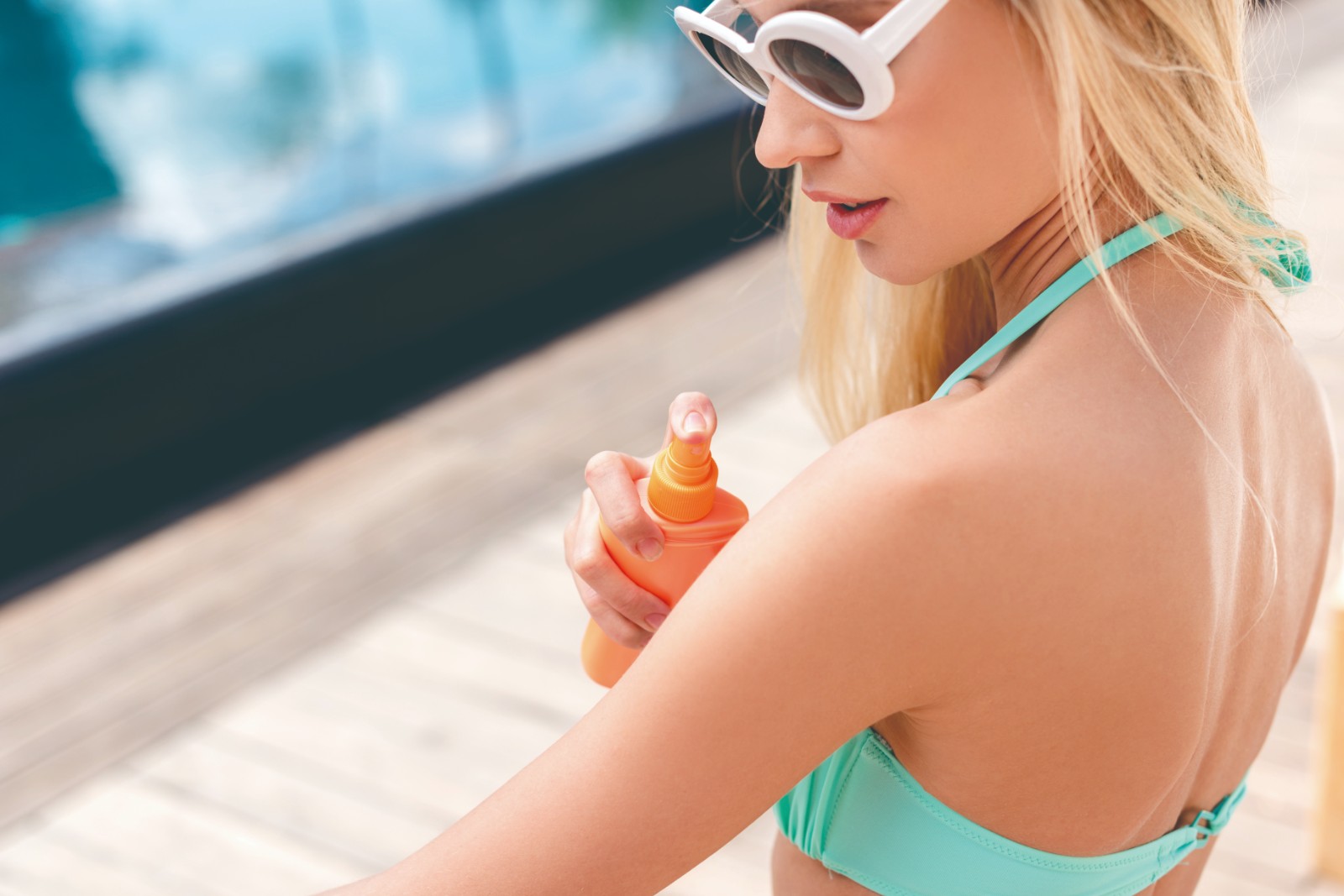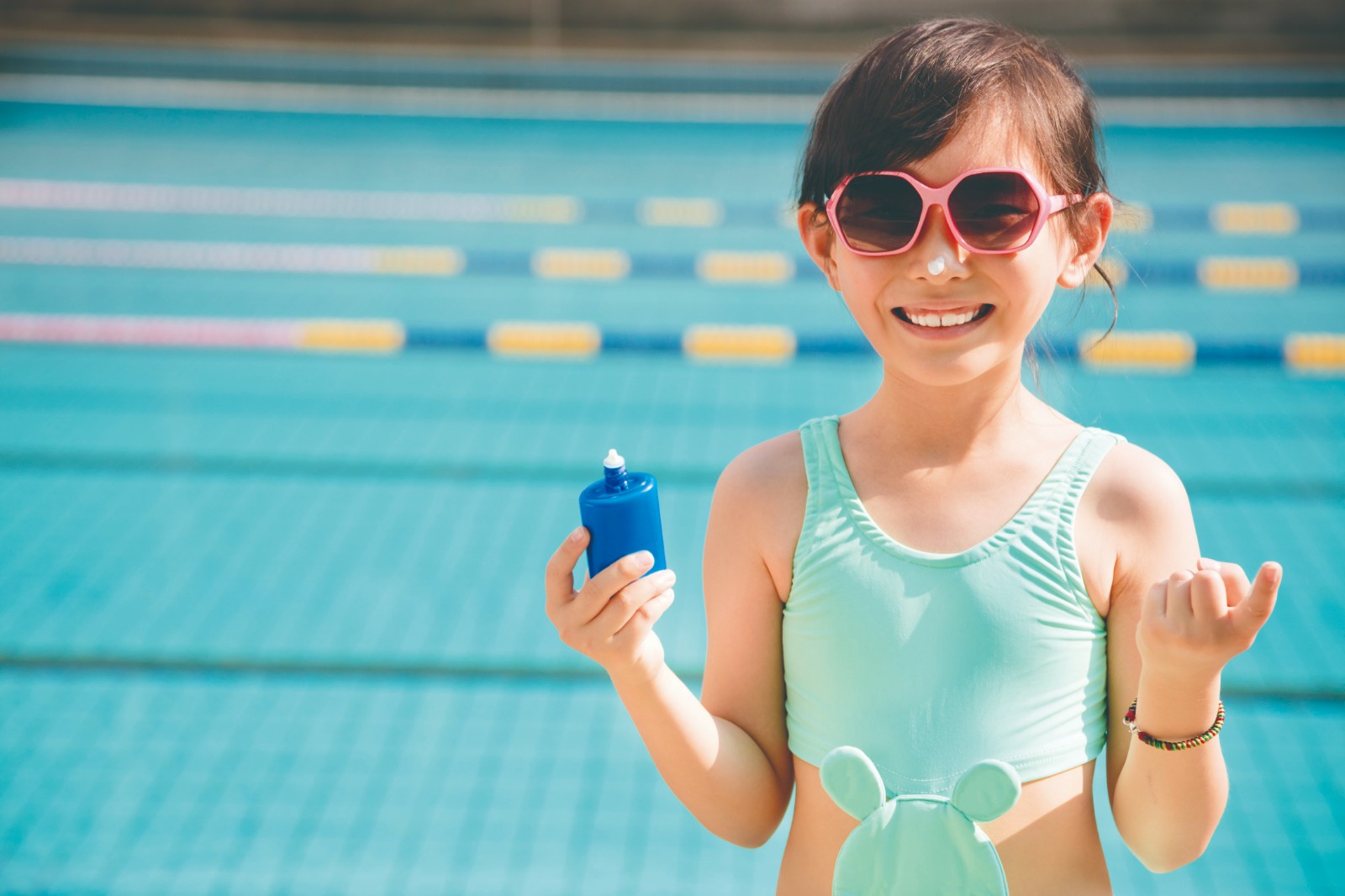
Although the temperatures may still be mild this early in spring, ultraviolet radiation is still just as strong as it is in summer. That means sun protection is a vital part of any outing!
Why do we need to protect against the sun?
Summer is here and sun protection is a topic of concern for many people. So, why should we protect ourselves against the sun? That would be due to a concept called photoaging.
Photoaging, also called extrinsic aging, is premature skin aging resulting from prolonged and repeated exposure to solar radiation. The changes of photodamage are superimposed on the changes caused by chronologic aging and are responsible for most of the characteristics we associate with aging. Important clinical features of photoaging include fine and coarse wrinkles, depigmentation, and loss of elasticity. Light photodamage can be partially prevented and reversed with proper sun protection and various prescription medications.
What causes photoaging?
The loss of the structural integrity of the dermal extracellular matrix caused by chronic ultraviolet (UV) exposure is believed to be primarily responsible for the wrinkled appearance of photodamaged skin. The dermal extracellular matrix is a complex meshwork of several macromolecules, including collagen and elastic fibers, glycoproteins, and glycosaminoglycans, which provide strength and resilience to the skin. Type I and III collagens are the most abundant proteins in the dermis and the main target of sun-induced damage.

How does sunscreen protect your skin?
Sunscreens are topical preparationscontaining filters that reflect or absorb radiation in the ultraviolet (UV) wavelength range. Sunscreens are classified as organic (formerly known as chemical sunscreens) and inorganic (formerly known as physical sunscreens). Broad-spectrum sunscreens are generally a combination of sunscreen products that are able to absorb both ultraviolet B (UVB) and ultraviolet A (UVA) radiation.
Two kinds of sunscreen:
Organic filters include a variety of aromatic compounds that absorb UV radiation and convert it to a negligible amount of heat.
Inorganic filters are mineral compounds such as zinc oxide and titanium dioxide that reflect and scatter UV light over a wide range of wavelengths.
Inorganic filters are more stable andare less likely to irritate the skin than organic filters, as well as having a thicker consistency.
How to pick the right sunscreen
There are two different concepts, SFP and Water Resistence.
SPF value: SPF value primarily measures the level of protection against ultraviolet B (UVB) and ultraviolet A2 (UVA2) and is based on the ratio of the minimal erythema dose on sunscreen-protected skin compared with unprotected skin. It can also measure the sunscreen’s ability to protect against a sunburn reaction, which is due primarily to UVB.
Water resistance: Water (and sweat) resistance is a key feature to consider when selecting a sunscreen product to use while working or doing recreational activities outdoors. The terms “water-resistant” and “very water-resistant” mean that the SPF is maintained after 40 or 80 minutes of activity in water or sweating, respectively. The water resistance depends on the vehicle in which the sunscreen is formulated as well as the active ingredients.
SPF >=15: Sunscreen products with SPF 15 are generally recommended for daily use. Sunscreen-containing cosmetics providing broad-spectrum protection (facial moisturizers, foundations) should be preferred to those containing only UVB filters.
SPF >=30: Broad-spectrum sunscreen products with SPF 30 or higher are recommended for individuals performing outdoor work, sports, or recreational activities. People with pale or light skin should be sure use broad-spectrum sunscreens with a sun protection factor (SPF) of 30 or higher when performing outdoor activities in sunny weather. The American Academy of Dermatology recommends the use of sunscreen products that have an SPF of 30 or higher, broad-spectrum coverage, and water or sweat resistance.

The proper way to use sunscreen
Sunscreens must be applied liberally, repeatedly, and to all sun-exposed parts of the skin to provide effective protection.
Firstly, sunscreen should be applied 15 to 30 minutes before sun exposure to allow the formation of a protective film on the skin. It is recommended to wait for at least a few minutes (ideally, 10 to 20) following sunscreen application before dressing.
Reapplication at least every two hours is necessary. Because all sunscreens will eventually wash off while swimming or sweating, reapplication after each water exposure is needed even for sunscreen products labelled as “water resistant” or “very water resistant”.
Here is a tip to help you ensure an even application of adequate amounts of sunscreen to the exposed areas:Teaspoon Rule
The “teaspoon rule”, means involving the application of approximately 1 teaspoon (about 5ml, visually measured) of sunscreen to the face and neck area, a total of 2 teaspoons (10ml) to the front and back torso, 1 teaspoon to each upper extremity, and 2 teaspoons to each lower extremity.
How to choose sun-protective clothing?
If someone is sensitive to sunscreen, sun-protective clothing is an effective alternative that can prevent photoaging. The degree of protection provided by clothes is defined by the ultraviolet protection factor (UPF), which indicates how effective a fabric is at blocking out solar ultraviolet (UV) radiation. The UPF classification is certified by national and international organizations.
• UPF15-24 means good protection
• UPF 25-39 means very good protection
• UPF 40-50 means excellent protection
A garment’s photoprotective capacity may also be enhanced by washing with detergents containing optical whitening agents. Shrinkage from repeated washing and drying may actually improve the UPF. In daily life, people are more likely to adopt a combination of sunscreen clothing and sunscreen.
Many people will use a combination of sun-protective clothing and sunscreen. We hope that after reading this article, you will be able to have a general understanding of sunscreen protection and its importance!
Jiahui International Hospital
Phone: 400 868 3000
Web: Jiahui.com/en